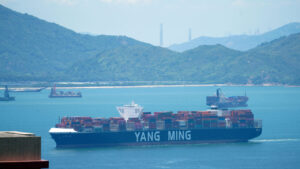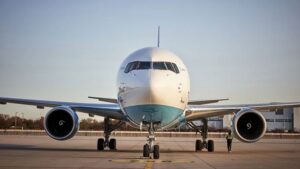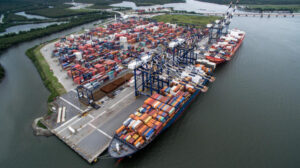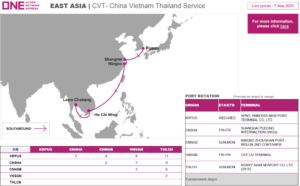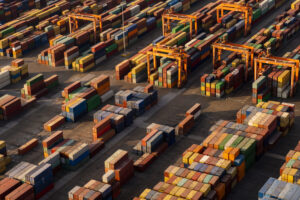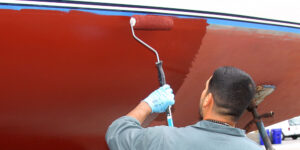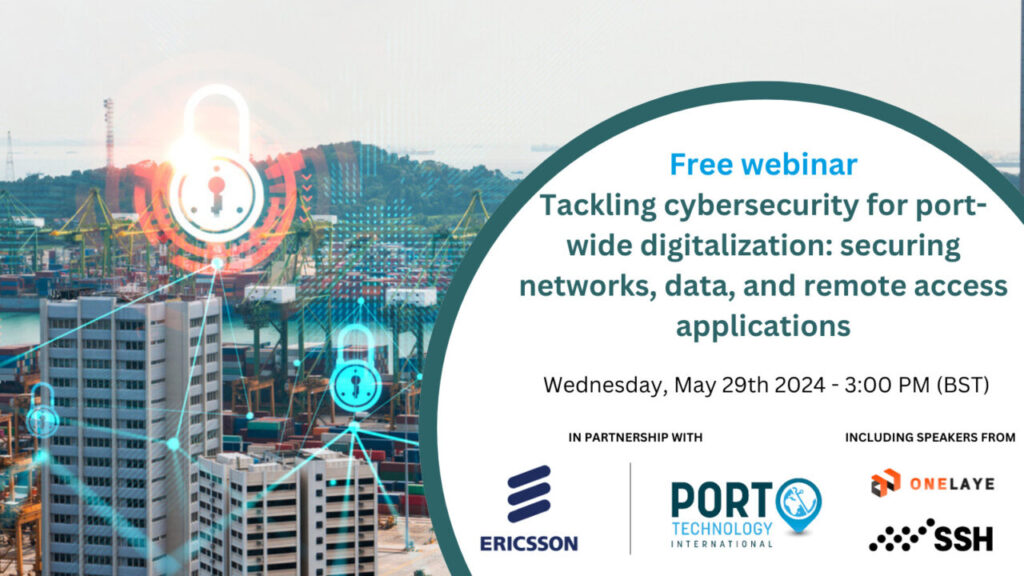Automation and smart technologies including artificial intelligence (AI) are still the solution to the maritime industry’s biggest challenges, such as how to process more cargo in an environmentally friendly way.
An overriding view during PTI’s webinar on ‘Achieving Sustainability through Autonomous Automation and Supply Chain Collaboration’ was that ports need to make better use of the data they collate and utilise AI to make operations more efficient, connected and sustainable.
Access the webinar on-demand here
Dr Rafiq Swash, Founder of AIDrivers, claimed that sustainability can only be achieved if ports are constantly able to identify areas of improvement, which AI can enable them to do.
“True sustainability is being able to identify improvements and AI can help solve problems which cannot otherwise be solved by mathematical models or traditional ways of engineering, where data is not as accessible and a lack of understanding of the operation’s complexity. AI can provide the ability to deliver the service demands.”
Technologies such as AI and automation have become more prominent in the port industry as demand for containerised goods has increased amid the COVID-19 pandemic and the ever-increasing size of container ships.
This has put strain on operations and demanded ports and terminals to search for ways to increase connectivity and better manage infrastructure in a way that is environmentally friendly.
Aldo Ferrufino, Port Solutions Director, Jacobs Engineering, said digital twin technology can help ports on their way by giving greater prediction capabilities, in particular with managing yard traffic.
“Digital twin technology will simulate and tell which patterns trucks are likely to take, because in a terminal not all vehicles take the same roads every time.
“Some are more used than others, so what does that mean? It means I don’t have more robust roads in certain areas and less robust roads in other areas, and that applies everywhere in the terminal.
“The digital twin can help you predict better maintenance and allocate funding to specific areas where it is needed. There are a lot of things that can be done with it, that is just one example.”
Dr. Swash picked that point up and said digital twin technology allows ports to identify areas of timesaving and optimisation, including other yard equipment, including cranes, to the point where certain equipment can be taken offline when it is not needed.
“Another case is that if you want to extend your port operations for other shipping companies, you will be able to understand the results before and rescale your data, and this goes back to the idea of how best to design ports.
“Having the ‘time machine’ of the digital twin is something we should embrace. Digital twin is not just about optimising existing terminals but also enables better design of new terminals.
“It is about understanding your operations a lot better and doing things that you cannot do in a real environment.”
A major hurdle for ports in recent years has been the increasing amounts of data accrued and how best to store and utilise it to make operations more efficient. This requires connecting yard and container handling fleets and collating the information they create.
Jay Pandya, Principal Co-Founder, Igo Solutions Group, said that the challenge of connectivity had lessened in recent years and that predicting when some equipment will fail has also become easier.
“Connectivity used to be a challenge but is becoming less and less of one. We are connecting and transmitting data from all the yard container movements to the Cloud within milliseconds through the latest technological solutions.
“The advent of 5G and improved mesh technology has allowed us to be constantly connected to the equipment as well.
“In terms of equipment failure predictability, you can take a fault management diagnostics system in the port itself and use it as the backbone of data to start predicting when equipment is going to fail during various times of the year because weather plays a huge part in whether the equipment will fail or not.
“The world is changing very fast beneath our feet and we need to adapt to that change.”
Ferrufino agreed and described network connectivity as “fundamental” to modern port and terminal operations.
“In terms on infrastructure when you see these technologies, such as autonomous trucks and AI you automatically think the terminal upgrade will be complicated, but actually it will be simplified and stays the same.
“What these technologies do is turn linear engineering into non-linear engineering, so instead of straight tables and lines, it is the real data you collate.”
Dr. Swash compared port connectivity and network bandwidth to “fresh air”, saying you cannot get enough of it.
“The effective approach is to think how you can utilise the communications and process data in an efficient way. That is not just providing the real-time connectivity and access but also keeping information secure from cyber-attacks also communication corruption.”


